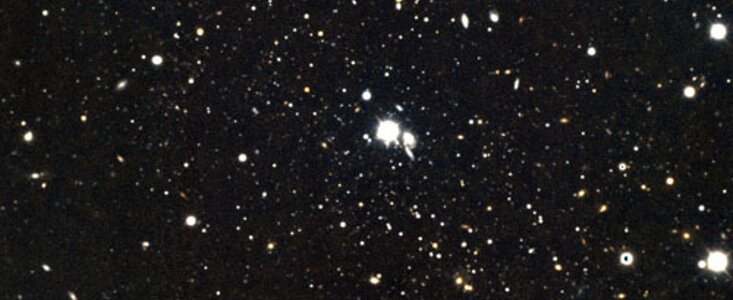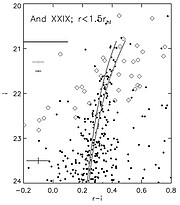New Dwarf Galaxy Discovered near the Andromeda Galaxy
29 September 2011
New observations with the Gemini Multi-Object Spectrograph on Gemini North confirm a new dwarf companion to the Andromeda Galaxy.
The Local Group of galaxies includes many smaller dwarf galaxies in addition to the large Milky Way and Andromeda spiral galaxies. These dwarfs tend to contain a high proportion of dark matter, and theories of galaxy formation and dark matter make specific predictions about their presence and quantity. The Local Group contains many fewer dwarf galaxies than “standard” models of galaxy formation in a dark matter-dominated universe predict and at least two outstanding questions remain: 1) whether astronomers have missed some of the dwarfs (which, even though these in the Local Group are relatively close, are hard to see because they are intrinsically faint), or 2) whether dark matter theories need to be revised.
Now, adding new evidence to the debate, Eric Bell (University of Michigan) and collaborators report the discovery of another dwarf spheroidal companion to the Andromeda Galaxy, called Andromeda XXIX (And XXIX). Fainter than some individual stars in the Milky Way (e.g., eta Carina), this dwarf is particularly interesting owing to its distance from the Andromeda Galaxy. It is over 200 kiloparsecs (650 thousand light years) from Andromeda, where the distribution and properties of dwarf companions to Andromeda are very poorly understood. The team first identified the candidate in the Sloan Digital Sky Survey, where it appeared as a slightly more populated region of the sky at the outskirts of the Andromeda Galaxy.
In this new work Bell et al. followed up with deeper observations using GMOS on the Gemini North telescope - allowing them to confirm the dwarf’s existence and measure its properties. The deep GMOS imaging data (geminiann11013a) show the clear signature of red giant branch stars with no sign of other, more luminous, bluer stars (geminiann11013b). These data led to its confirmed identification as a dwarf spheroidal galaxy. The team also measured other physical properties of And XXIX, finding that it is typical of other dwarf in the Local Group in terms of size and ellipticity, given its luminosity.
Links
- See the University of Michigan press release on this result issued on Monday November 7, 2011.
- Complete results are published in The Astrophysical Journal Letters.



